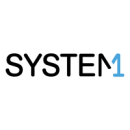In a cartoon version of the future, mundane, daily routines and far-out technological marvels often go hand-in-hand. While we may be far out from the pneumatic tubes, flying cars and robotic maids of The Jetsons, daily usage of sophisticated technology is becoming more familiar as we get closer to the distant future of 2062.
Artificial intelligence is one of the most popular new technologies that businesses are using to upgrade their workflows, products and services. Many businesses are leveraging generative AI and large language models to access and summarize complex data in conversational language to add time-saving convenience for employees and customers alike.
AI is no longer a fringe tool in the workplace, and its usage is growing more standard with new generations of workers. According to a recent survey from Salesforce, 45 percent of the U.S. population is using GenAI and LLMs in some capacity. Millennial and Gen Z professionals make up the majority of AI users, and for the youngest professionals, AI is a go-to tool in daily work: 47 percent of Gen Z professionals say they get better guidance from AI than they do from their managers, according to a report from TalentLMS.
To get a snapshot of how businesses are using AI to improve their workplaces, products and services, Built In asked 12 professionals about the unique ways they use the latest AI tech.
Featured Companies
Atlassian is a work management company that offers tools to help every team unleash their full potential.
What was life like before Atlassian introduced AI into your product?
At Atlassian, we have over 20 years of insights into how teams plan, track and deliver work. Our experience helps us serve all types of teams to increase the velocity at which teams move work forward with popular collaboration tools like Jira, Confluence and Loom.
However, there was a lot of potential to improve the way teams find, learn and act on information. Expanding the use of AI in our products offered us a new way to face challenges that hindered productivity and user satisfaction. Without proper integration, data could be scattered across different tools, making it harder to get work done. We wanted to help customers spend less time on repetitive tasks and searching for information across third-party applications and more time on the strategic parts of the job.
How has life changed for you since you added AI?
Since integrating AI into our operations, we’ve seen notable improvements in how we handle information, automate tasks and generate content. Through the experience provided by Rovo Chat, users can directly access information from the extensive enterprise knowledge base, presenting it in an organized and user-friendly manner. When it comes to automating tasks, it’s not just for the sake of efficiency; it’s about unlocking human-AI collaboration to focus on more creative and complex problems, increasing productivity and job satisfaction.
Welcoming in the recent era of GenAI has also empowered our users to produce better content faster than ever before. Overall, the introduction of AI has allowed us to continue delivering our biggest differentiator, which is our ability to help unleash the potential of all teams with our products.
What does this shift signify in the bigger picture of Atlassian?
As we transition into an AI-centric organization, our focus is on the development of Atlassian Rovo as a major transformation initiative at Atlassian. We know the future of teamwork will increasingly involve human-AI collaboration and we’re excited to build this future for our customers. AI is now seamlessly integrated into all our products, including Confluence, Jira, Bitbucket, Compass and more, to help our customers unlock more productivity gains. Our journey will continue to be fueled by experimentation and investing in upskilling to improve AI literacy across the board.
About Atlassian Rovo
Atlassian’s newest AI product, Rovo, connects to the data in an organization’s other Atlassian tools and SaaS apps and, through a proprietary data model Atlassian calls “teamwork graph,” unlocks a comprehensive view of the organization’s goals, knowledge, teams and work. Rovo then goes a step further, allowing users to act on the intelligence with virtual teammates — called Rovo Agents — who can, among other things:
- Generate, review and refine content
- Automate and streamline time-consuming tasks
- Answer questions and recommend best practices
- Help with onboarding new employees
Qualtrics creates software that helps brands deliver exceptional frontline experiences, build high-performing teams and design products people love.
What was life like before Qualtrics introduced AI into your product and workflow?
Our research leaders traditionally struggled with too much time spent on small tasks and a lack of return on every research investment. In other words, they needed to lower costs but also move their teams to focus on the value chain.
How has life changed for you since you added AI?
The big value that AI brings to us today is visible in three major areas. The first is that companies now get better data through intuitive, AI-powered conversational surveys, which lead to more valuable feedback.
Second, AI-generated summaries, topic detection and the pull of specific quotes to drive a better understanding of research are already saving us weeks of work. Specifically, a researcher who previously ran a series of interviews or focus groups would have had to pour over several long videos, take notes, dig up insights and create highlight reels to drive empathy with stakeholders. Now with Qualtrics AI, that process can take minutes.
“AI-generated summaries, topic detection and the pull of specific quotes to drive a better understanding of market research are already saving us weeks of work.”
Finally, where an organization used to work in silos and struggle to manage research, now Research Hub helps anyone in the org to share and find insights across customer feedback and market research through an easy, intelligent search. Summarization of studies makes it even easier to determine if a particular study is relevant to a new business question.
What does this shift signify in the bigger picture of Qualtrics?
Overall, AI will continue to help researchers focus on higher-level problems and make important decisions because teams will be free from time-consuming tasks and have better insights.
Klaviyo is an e-commerce company that provides first-party data to content creators.
What was life like before Klaviyo introduced AI into your product?
We’ve always had a vision that AI should be an extension of the marketers who use our product and a real way to expand what’s possible. If data is truly the heart of what Klaviyo is and everything our product is built on, then AI is what we consider our brain — it powers not just action, but intelligence and insight.
So many of our customers have unlocked the power of what’s capable with Klaviyo through our flows, segmentation and integrations. But so much of it was done manually and depended on the user’s time and knowledge of our product. For business owners, time can be a real barrier, and the level of product knowledge varies across our customers.
“If data is the heart of what Klaviyo is and everything our product is built on, then AI is what we consider our brain — it powers not just action, but intelligence and insight.”
Now, they’re able to use features like Segments AI and Flows AI to create revenue-driving actions in seconds, not hours. But what’s really powerful is that Klaviyo AI is doing so much of the work for them, giving them the ability to go deeper into their customer base to pull out the insights that are most likely to drive action.
How has life changed for you since you added AI?
We have a few case studies we’ve published as of late around use cases from our customers from brands like Tata Harper, Proozy, Willow Tree Boutique and Every Man Jack. I love reading these customer stories and seeing numbers like a 44 percent increase in revenue from our product using AI and a 65 percent increase in signups using AI. That kind of impact is exactly what we’re after.
We are only scratching the surface of what’s possible with AI, and every day I hear of a new use case leveraging our AI tools that we hadn’t even imagined yet. Our goal is to embed AI across every part of our product and make it so easy to use that our customers start to get inspired by what’s possible. That’s what AI should be when it comes to software — something that makes our work better, smarter and more successful than it ever has been.
What does this shift signify in the bigger picture of Klaviyo?
When leveraging what’s possible with AI and truly embedding it into every part of our product, we think about helping our customers work smarter, faster and more efficiently. But really, our thinking is at a much higher altitude than that. We want our customers to dream big, to imagine what’s possible beyond what they think they’re capable of today and how Klaviyo AI can make that dream come true.
In the long term, AI will open up so many opportunities for our customers, and our team is set up to deliver on that every day. We believe we need to be organizationally ready to absorb a continuous stream of innovations going forward — like the LLM moment — and we’re trying to set ourselves up to leverage moments of innovation and turn them into customer value as quickly as possible.
Wipfli is an advisory firm that helps clients navigate the modern marketplace, optimize performance and drive growth.
When thinking about life before Wipfli introduced AI into your product, how has AI made an impact?
AI has helped us be more efficient and accurate, plus freed our time to focus on building relationships and doing higher-level strategic work.
Even something simple, like using AI to take notes in a meeting, has had a huge impact. We don’t have to have someone in the meeting or distract someone who should be participating in the meeting to log decision points or next steps, and AI reduces human error in misunderstanding those decisions or next steps.
We leverage AI as much as possible to extract data from our systems, build reports and drive our decisions. That saves us time and brain power so our associates can work more to help clients and each other.
From an accounting firm standpoint, the number of clients we’re working with makes the amount of data we have to process significant. There is so much information coming in every day that needs to be coded and categorized. Because this requires a lot of manual effort, it can limit the time we spend on the things that drew us to the profession in the first place — helping our clients. The more time we spend with people helping them and building relationships, the bigger impact we can make.
How has life changed for you since you added AI?
Using AI for data processing frees up huge chunks of time and releases us from some of that monotony — all while reducing human error. The first thing a lot of firms should take a deeper dive into is creating automation in data processing. Any time you’re moving information files or data from one system to another, that’s usually a quick, easy time for you to think about building automation. It’s the simplest and lowest barrier to entry in some of those use cases.
In our management consulting area, we’re using AI to help companies review their internal policies and procedures and make recommendations on how to optimize from a risk management or compliance standpoint. It takes a long time to read through leases or partnership agreements. By expediting that process, Wipfli associates get a chance to upskill a little bit faster. Leveraging tools that can review, process and develop a first draft of recommendations can make this work more accessible, which is critical for us to stay competitive.
What does this shift signify in the bigger picture of Wipfli?
The integration of AI technology within our organization represents a significant change in the learning and development of our people. AI transformation lets us foster a more engaging, fulfilling work environment. By automating time-consuming data-processing tasks, we have freed up time and resources that can now be directed toward more meaningful, client-centric activities. This shift allows our associates to upskill and develop their proficiency at a faster pace, as well as spend more time on the part of their job they find most engaging. When associates are working on what they love to do, that’s a win for everyone. Associate engagement improves, morale is higher and we’re able to retain more of the top talent we need to succeed.
“AI transformation lets us foster a more engaging, fulfilling work environment.”
Beyond just improving operational efficiency, the adoption of AI-powered tools can reignite the passion that drives our business. Our consultants can focus on building stronger relationships with clients — leveraging their enhanced analytical capabilities to deliver more personalized, impactful solutions. This increased emphasis on human-centered service aligns with our core values and differentiates us in a competitive market.

Centerfield delivers outcome-based digital marketing solutions and omnichannel experiences for the world’s leading brands.
Tell us what Centerfield’s product looked like before you introduced AI.
Centerfield’s contact center operates using our proprietary technology, Dugout. Informed by a $1 billion media investment, Dugout powers our data-first sales experience by automating customer acquisition and providing real-time personalization, relevance and contextual understanding for millions of interactions. It includes features like advanced call routing, performance tracking and quality checks, empowering agents with timely customer data to optimize every aspect of the shopping journey.
How has life changed for you since you added AI?
Integrating AI into Dugout has revolutionized our approach. For example, in partnering with Telco, we used AI to boost the upselling of wireless plans alongside internet packages. Analyzing tens of thousands of calls, we identified successful tactics from top agents, implemented personalized coaching and optimized scripts, resulting in a 230 percent revenue increase within two months.
“Using AI to analyze tens of thousands of calls, we identified successful tactics from top agents, resulting in a 230% revenue increase within two months.”
What does this shift signify in the bigger picture of Centerfield?
Centerfield uses conversational AI to supercharge sales optimization. We analyze massive call data to understand not just what customers say, but what they really mean. This deep insight lets us personalize the sales journey for both agents and customers, making interactions relevant and effective. Think of it as an AI sidekick that analyzes every call, whispering insights to optimize conversations and drive results. That’s the power of Centerfield’s conversational AI.
System1 is an omnichannel digital marketing platform that puts the right ads in front of the right people at the right time.
What was life like before System1 introduced AI into your product?
At System1, our performance marketing teams drive and maintain a considerable volume of advertising campaigns across multiple ad networks, media types and inventory. Before the introduction of AI into our marketing automation platform, the teams would still have to spend their time manually curating inputs into the platform. Tasks like identifying new ad targeting opportunities, ideating new creative assets for ad campaigns and refreshing existing live creative assets, activating and nurturing ad campaigns to profitability and optimizing the advertising budgets and performance targets.
How has life changed for you since you added AI?
After detailed discussions with our internal stakeholders and external partners, it was clear that there were many paths to automation to solve repeatable patterns being addressed manually. Our engineering teams were also keen to move towards low-code application development solutions, significantly reducing time to value.
We took the major categories of our marketing platform and implemented a multi-month roadmap to systematically build out automation workflows, real-time analytical feedback loops and GenAI-based asset generation to supercharge our performance marketing efforts.
The impact has been quite dramatic. We’ve been able to significantly increase our product velocity, and our performance marketing teams have the capabilities to scale out their advertising campaigns by a factor of almost twenty.
“The impact has been quite dramatic. We’ve been able to significantly increase our product velocity.”
What does this shift signify in the bigger picture of System1?
With the vast adoption of AI-based workflows, in conjunction with low-code application development tools, we can now reimagine the traditional software delivery lifecycle. With AI considerably accelerating our product delivery, our business leaders feel empowered to make bolder decisions around feature requests, confident that they will not be looking at long delivery life cycles.
Many of our technology partners have applauded us for our creative and tangible adoption of AI, and are collaborating with us on their beta AI features.
SonderMind provides technology-driven solutions for therapists and individuals seeking therapy.
What was life like before SonderMind introduced AI into your product or workflow?
We are in the process of fully introducing AI into our product and workflows, so we haven’t seen a massive transformation yet. However, the difference is already apparent.
Before we attempted to integrate AI, our options were more limited. On the product side, user experience was constrained to predefined paths. Screens had to be designed with specific options and hardcoded decision paths which, while functional, restricted user flexibility. On the workflow side, when developers faced problems, they often relied on discussion boards like StackOverflow and internal knowledge sharing. They also had to manage repetitive tasks such as writing boilerplate code and tests, which consumed significant time and resources.
How has life changed for you since you added AI?
Although we are still in the process of fully integrating AI, we have already begun to see its potential. One of our initial implementations is an AI concierge for our mobile product. This feature engages users in natural conversations to understand their needs, rather than limiting them to predefined options. This conversational approach feels more intuitive and human, enhancing user engagement and satisfaction.
We have other AI-driven initiatives underway, including automation to optimize provider workflows and further guide users through their mental health care journey. For developers, AI tools like CodeGen provide substantial assistance, helping them overcome obstacles more efficiently and focus on higher-value tasks within their workflows.
What does this shift signify in the bigger picture of SonderMind?
This shift signifies a new era of innovation for our organization. We are now able to address long-standing pain points with intelligent, intuitive products that act as extensions of our providers. By leveraging natural language processing, our products can offer real-time assistance in plain English, making them more accessible and user-friendly.
“We are now able to address long-standing pain points with intelligent, intuitive products that act as extensions of our providers.”
From a workflow perspective, AI enhances productivity by automating mundane tasks, freeing up our team to engage in more creative and high-value work. The concept of the LLM operating system, as discussed by Andrej Karpathy in a recent talk, highlights the transformative potential of LLMs. These models are not just tools but represent a new programming paradigm, enabling the creation of next-level products with smart, natural capabilities. Mastery of this paradigm will allow us to deliver powerful, user-centric solutions that feel both natural and intuitive.
Analytics8 is a data and analytics consultancy that helps companies stay ahead in a rapidly changing world.
What was life like before Analytics8 introduced AI into your workflow?
As a services company, delivering a consistent client experience from initial contact through project delivery is always a top priority. However, before we introduced AI into our workflow, achieving this was easier said than done due to the unique needs and goals of each client. Our sales process was manual and time-consuming, relying heavily on the expertise of our different internal teams to tailor solutions for each client. This often led to varied experiences and inefficiencies. We needed a method to streamline the workflow and ensure the client experience remained consistently high quality throughout the entire process.
How has life changed for you since you added AI?
Since integrating AI into our sales workflow, our sales process has become significantly more efficient. We built a private GenAI assistant that streamlines collaboration between teams, enabling us to stay focused on building practical, custom solutions for our clients.
By accessing our organizational IP, this AI assistant speeds up the sales review process and increases pipeline velocity. For example, it provides our sales team with quick access to relevant case studies, helping them tailor service offerings to fit each client’s needs while staying aligned with our core consulting strengths. This targeted approach has delivered faster, more reliable sales outcomes and ensured we start engagements from the best position to achieve specific, targeted results for our clients.
What does this shift signify in the bigger picture of Analytics8?
This shift to AI signifies a step forward in our commitment to innovation and efficiency. Instead of relying on general, public AI tools, we have developed purpose-built AI tools that enhance the efficiency of specific workflows and discrete tasks across the company.
“Instead of relying on general, public AI tools, we have developed purpose-built AI tools that enhance the efficiency of specific workflows and discrete tasks across the company.”
By focusing our AI applications on specific processes, we ensure more consistent and impactful results. For instance, our AI tools streamline our sales review process, provide tailored insights from our organizational data and enable our teams to deliver customized solutions faster and more accurately.
This targeted approach allows us to measure return on investment effectively and ensures that our AI initiatives drive significant value. Our consultants continue to experiment with AI-driven solutions, creating industry-specific tools that add measurable efficiencies and substantial value. This shift underscores our leadership in adopting advanced technologies to drive continuous improvement and deliver superior services both internally and externally.

ActionIQ is a customer data platform that allows marketing teams to tap directly into data to enhance the customer journey.
What was life like before ActionIQ introduced AI into your product?
AI has been around for a while now, and it’s been part of our product since inception for decisions and optimization. GenAI has been new and exciting for us to introduce into our customers’ workflow to make their lives easier. Before GenAI was introduced into our product, customers had to manually type out the audiences they wanted to create, and their ability to create on-brand, one-to-one content lacked the GenAI-driven engine it needed at scale. But with GenAI, we are now able to better support our customers’ creativity, speed and performance.
How has life changed for you since you added AI?
Now, we’re seeing marketers take their efficiency to the next level with our GenAI-driven audience copilot that responds to natural language requests. They’re able to type out which audiences they want to create and have those audiences designed on a dime in their own language, without requiring SQL or data expertise.
“We’re seeing marketers take their efficiency to the next level with our GenAI-driven audience copilot that responds to natural language requests.”
We also believe in forging great partnerships within the space to bring the best to our customers. That’s why we partnered with Typeface, a GenAI content creation tool. ActionIQ’s novel abstraction layer provides critical context from the customer experience, such as “loyal customer who has made a recent purchase,” or “frustrated returning customer on the verge of attrition,” making it accessible to models that will truly understand the brand to generate content for any audience to increase performance.
What does this shift signify in the bigger picture of ActionIQ?
We aren’t under the persuasion that AI is going to steal your job. But we do think that it can make our customers’ lives — and our lives — much easier and more creative. We are always looking to innovate and explore within the boundaries of what is truly purposeful and meaningful for our customers, whether it’s a couple of hours saved in a customer’s day with an audience copilot or huge performance gains from personalized content with our Typeface integration. Both are big wins for us. The big picture is always going to be the customer, but the shift to GenAI is something we’re excited about.
Grand Studio is a strategic design firm that takes on complex challenges to build clearer paths and tools for success.
What was life like before Grand Studio introduced AI into your product?
Given that synthesizing research data is such a manual and time-consuming process for us, we jumped at the chance to use GenAI LLMs to help speed up our process.
We recently used ChatGPT to help us synthesize some long-format survey responses. We had several hundred responses to go through and using an LLM helped us streamline and speed up the process of looking for initial insights and patterns across the data. This would have taken our research team a couple of days to complete. Instead, we were able to clean up the data, remove identifying and proprietary information, synthesize our results and create our findings in just half a day.
Now, is this the right approach for all of our research? Definitely not. There are many industry-specific and human-specific nuances that these models can’t catch, which is why we only take this approach with certain kinds of data. But when it comes to taking a first pass at large amounts of data, GenAI is a valuable tool to add to our research toolbox.
How has life changed for you since you added AI?
Grand Studio is a human-centered design consultancy, and this means that we fold a lot of generative and evaluative research into our process. We spend a lot of time gathering data, interviewing users and stakeholders, running surveys and trying to understand the problems our clients are facing before shaping award-winning customer experiences and products.
One of the biggest hurdles we’ve faced after gathering lots of data is that the process of cleaning, organizing and synthesizing our data for useful insights, themes and takeaways is time-consuming and manual. We work on very tight timelines. What might take another research team six months to learn, we tend to knock out in 12 weeks. Doing a thorough analysis is crucial to getting actionable, relevant and valuable takeaways and recommendations out of the data. But with the amount of data our research teams collect, it can be very daunting.
What does this shift signify in the bigger picture of Grand Studio?
For us, it means we’re able to work faster and at a bigger scale. Before, running a survey with over 1000 long-format responses often just wasn’t feasible for our teams on our timelines. But now thanks to GenAI’s LLM processing speeds, we can input our survey data and process it for relevant takeaways in a fraction of the time — but always with a human check for accuracy.
It’s not about replacing research, but about augmenting what our researchers already do and helping them do it at a larger scale. This ultimately lets us conduct more research and gather more data, leading to better takeaways and recommendations, better products, better user experiences and happier users.
“It’s not about replacing research, but about augmenting what our researchers already do and helping them do it at a larger scale.”

3Play Media offers captioning, translation and audio description services to make video accessibility easier for everyone.
What was life like before 3Play Media introduced AI into your product?
3Play Media was founded in 2008 on the premise that AI and human-in-the-loop, or HITL, supervision could be used to caption every video. At the time, and in the transcription space in particular, automated speech recognition, or ASR, was not generating the market buzz that GenAI is today, and there was broad skepticism about the feasibility of applying ASR to produce accurate, affordable captions at scale. AI was at the core of 3Play Media’s original market hypothesis for over 15 years, so it’s hard to comment on life for 3Play before that.
That said, we’re finding new applications for AI and GenAI, including new AI dubbing services, content summary and insights, process quality assurance and monitoring and even using AI services to better understand our customer needs. We’re always seeking and finding improvement with AI as an important tool in that pursuit.
How has life changed for you since you added AI?
3Play’s new AI dubbing product is the latest significant market step towards making video content globally accessible for multinational corporations seeking more impactful localization strategies. Traditional dubbing services have been cost-prohibitive for all but media and entertainment buyers, for whom the product being sold is the video.
“3Play’s new AI dubbing product is the latest significant market step towards making video content globally accessible.”
For global corporations, employee training and instructional videos are a cost center, with a fixed localization budget. This budget is typically sized for subtitles and not higher cost and longer lead time than traditional dubbing services. 3Play’s AI dubbing provides access to corporations that want to support more effective global media strategies and are working with traditional subtitle budgets and lead times. Our AI dubbing quality is often indistinguishable from traditional dubs. In a similar fashion to how 3Play made captions accessible to new markets and customers, 3Play is bringing high-quality, affordable AI dubbing at scale to corporations.
What does this shift signify in the bigger picture of 3Play Media?
We’re seeing investment in AI dubbing drive innovative new tooling and LLM applications in pursuit of the quality our customers and audiences deserve. Dubbing is a hard problem to automate, so we’re optimizing every automatable supporting process with AI and leveraging 3Play’s HITL expertise to make corrections where appropriate. If you’re reading this and thinking that sounds like supervised training for AI, you’re not wrong.
We’ve been supervising ASR at scale for 15 years, and now we’re supervising new AI processes at scale to support AI dubbing. Through supervision, we can significantly boost accuracy in every relevant ASR engine we’ve tested. We’re seeing an opportunity to improve tailored translation in dubbing script processing, and our focus on voice synthesis AI for dubbing is also landing as a huge upgrade to our existing, industry-leading audio description offering, launched in 2017.
In the bigger picture, we’re seeing a flywheel effect in solving harder problems like AI dubbing with HITL AI, which dramatically improves our core services to bridge access and language barriers.
Prosodica is a voice and speech analytics engine that helps businesses gain insights into customer experiences, employee engagement and customer satisfaction.
What was life like before Prosodica introduced AI into your product?
Every five years, we witness a revolution in the technology sector. Before the advent of GenAI, we were integrating smaller, transformer-based models into our products. Life before AI was marked by anxiety about how tasks could be accomplished. Today, the focus is on ensuring data security and cost-efficiency in executing these tasks. The introduction of GenAI has transformed our approach from the anxiety of how tasks can be done to a confident assurance that we can provide more comprehensive solutions. This change has been life-altering, offering a greater sense of capability and innovation in our services.
I have consistently strived to serve our customers by integrating the latest advancements. Introducing AI into our products has enhanced the experience for both me and my customers. AI has proven to be an invaluable tool, significantly improving the efficiency of our customers’ processes. Since the launch of the first model by OpenAI, I have utilized AI in various capacities to deliver faster, more effective and innovative solutions to our customers.
How has life changed for you since you added AI?
Prosodica offers a range of products tailored to various call-center industries. One of our most popular offerings is our application which provides an interface for quality assurance-related tasks. Before AI integration into the QA process, it involved manually reviewing system-flagged calls of interest. However, with the introduction of GenAI, we have automated the QA process, significantly increasing efficiency. AI allows us to conduct more elements of QA without human intervention, enabling our clients to enhance their customer experience by analyzing calls more effectively than ever before.
“AI enables our clients in call-center industries to enhance their customer experience by analyzing calls more effectively than ever before.”
What does this shift signify in the bigger picture of Prosodica?
At Prosodica, our mission is to empower representatives, delight customers and transform businesses through reliable and comprehensive customer experience data, real-time insights and recommendations and outstanding customer service. By enhancing the customer experience, we provide our clients with a comprehensive understanding of their business operations through detailed call analysis, insights and solutions for improving existing processes. The integration of AI has allowed us to create a more time-efficient QA process, underscoring our commitment to innovation and excellence.




























